----Mensaje original----
De: feedblitz@mail.feedblitz.com
Fecha: 14/07/2010 14:22
Para: "valdeande"<valdeande@telefonica.net>
Asunto: 2 Newsletters: 9 new articles
Here are the latest updates for valdeande@telefonica.netUpdates from:
"Search Engine Journal" - 5 new articles
- June Search Engine Rankings Show Google Losing Share a Bit
- Weekly Search &Social News: 07/13/2010
- RT @E_Schmidt The Hilarious Story of How We Built Froogle 2.0
- Time is on Your Side, Using Day Parts Reporting in Google Analytics to Increase Your AdWords ROI
- Evaluating the Lifetime Value of a Link
- More Recent Articles
- Search Search Engine Journal
June Search Engine Rankings Show Google Losing Share a Bit
Comscore's latest search engine rankings report covering the month of June is showing that Google lost around 1.1% market share. This is almost equal to the combined search market share earnings of Yahoo and Microsoft Bing.
But no cause of alarm for Google though, since comScore was quick to point out that the increase in Bing and Yahoo's market share was due to the continued utilization of contextual search approaches that tie content and related search results together. This was explained by comScore in a previous post.
Total searches conducted for June increased by 3 percent from May's search volumes at 16.4 billion searches. Total searches conducted on Google Sites amounted to 10.3 billion, 3.1 billion for Yahoo Sites and 2.1 billion searches for Microsoft Sites.
Check out the SEO Tools guide at Search Engine Journal.
June Search Engine Rankings Show Google Losing Share a Bit
Weekly Search &Social News: 07/13/2010
Hey there… hows things? Did you know it's time for another edition of '7 Days of Search and Social' ? Of course you did. Waiting with baited breath I am sure. The week that was did have a fair amount of goodiness, specifically there was a TON of stuff on link building (was it link building week and I didn't get the memo?). That being said, the 'search geek central' section was a bit light, which always makes me sad. I hope this week's offering finds you well… there's pleny as always to keep you reading into the wee hours. Enjoy!
And away….
Lead Story
SEO Dojo Radio
Has a nice ring to it don't ya think? Sure, it may not be interesting industry news to a lot of folks, but it sure is to me! We have been hosting weekly industry chats in the Dojo for some 40 weeks now and some of the gang thought we should bring a live version to the world, so we did.
This first edition is just a trial run to get into the swing of things… so do excuse the lack of professionalism, but we posted it anyway;
Listen to; SEO Dojo Radio Episode 1
Each week we will be talking some of the top stories from each week and then having a guest on to get geeky with. It seems a fun thing to do and will surely be some entertaining fun for all. You don't need to be a Dojo member to listen to them… they are open to the public.
And away we go….
Quick Nav Links – Talk of the Town – Geek Central – Social Search – Going Vertical – Videos – Tools – Patents - Talk of the Town
Content Programs and SEO – a post from yours truly on a topic near and dear to my heart; content strategy. There is so much more to it than merely slapping content up and hoping for the best. We take a look at the various elements required in any solid approach for not only building links, but authority as well. I hope you find it useful. SEO Checklist Part 2: Best Practices – Stephan Spencer put together a nice little check list of common elements to look at when doing site analysis. Probably nothing that really jumps out as revolutionary, but a good list for a refresher.
Information Architecture – Rocket Science Simplified – Yup, it is generally a safe bet that posts like this will get my attention as I am a HUGE fan of nailing you site architecture. Oh, and it has some 'Dave bait' as well… which also never hurts either.
The Inside Line On SEO- Speaking of check lists, this one from Aaron (via SEO Book) was a great read from the professional perspective. A good read and easily digestible.
5 Dirty Words in Link Building- was a post from Jennifer (via SEJ) that was a GREAT analysis of some of the most troubling terms in the world of link building.
Where Is Your Link Army Hiding?- still on the theme of links, there was a lot of them last week, we have an entry from Gabriella Saninno who's been seen around more and more these days. Another new voice in the making? If her recent work is any indication, she may be around for some time to come.
Before you create Linkbaiting content you have to Ingest your Niche – See what I mean about the spate of link building posts? This one is over on Cornwall SEO from a fella that knows a thing or two about creating linkable content. A worthy addition.
Cloaking is good for you. Just ignore Bing's/Google's guidelines. - lol… and what is a week on the Trails without a good rant? Weak I say… thus it was good to see Sebastian taking a great little kick at the can towards the world of legitimate and illegitimate cloaking. This is an area I wish search engines would talk about more for clarity. Nice on Seb!!
Mapping Anchor Text To Landing Pages- Did I mention it was seemingly link building week last week? Sheesh. This one is from one of my fav link building authors; Julie Joyce (who's birthday it was as well btw). I personally do like page mapping for Kws and anchor texts. Thus adding this one was a no brainer.
Top SEO Women – Just the Tip of the Iceberg – lol, ok, for the record I am not all that into lists, but this one ended up on my radar more for the comments than the post, (though it does highlight some of me fav peeps). If you'd like a little light entertainment, including yours truly, give it a read.
Search Marketing Reporting for Pros – friend of the Fire Horse, Tony Verre, had a pretty good little reporting post complete with examples for you. I am always a fan of posts with actionable items for the industry. Great stuff Tony, thanks for sharing.
Data Blindness – Dave Snyder, via the newly launched Blue Glass blog, pined over the all too common habit of allowing tools/data cloud one's judgement and lead the SEO program. Data on a good day can be suspect and that should always be considered. Good to see ya writing again Dave!
Link Building with the Experts Interview – it goes without saying by this point that it was a linky kinda week right? But not to be outdone Rae (via Outspoken Media) put out a monster post of Q&A with many a well known name in the biz. A great post that was missing one thing… ME… lol, ok, fine… it was a great post even without me. Hee hee…
Quick Nav Links – Talk of the Town – Geek Central – Social Search – Going Vertical – Videos – Tools – Patents - Search Geek Central
Quick Nav Links – Talk of the Town – Geek Central – Social Search – Going Vertical – Videos – Tools – Patents -
Search Patents
Microsoft
Relevance improvements for implicit local queries
Recommendation of related electronic assets based on user search behavior
Yahoo Method of determining geographical location from IP address information
/end SOSG session
Quick Nav Links – Talk of the Town – Geek Central – Social Search – Going Vertical – Videos – Tools – Patents - Check out the SEO Tools guide at Search Engine Journal.
Weekly Search &Social News: 07/13/2010

RT @E_Schmidt The Hilarious Story of How We Built Froogle 2.0
Are you trading in commodities? Is your store indistinguishable from your competitors' store, for all intents and purposes? It's time to figure out your unique value proposition, because Google's gunning for you.
Meanwhile, Eric Schmidt' laughing his head off as we sit idly by and watch. Watch what? Watch Google amassing positions at the start of the information highway (Android, netbooks, Chrome, iGoogle is literally a startpage), on its distribution points (search, ads, nofollow, and paid links) AND at its destinations (Youtube, Blogspot, Knols, Pages, Places, Maps/Reviews).
Froogle 2.0, Google's progressive expansion into markets where data is easily structured and searched, made progress recently with the acquisition of ITA software. ITA powers flight search for big names in travel like Kayak.
As Aaron Wall points out, Google's making good progress towards becoming a thin affiliate. They're now in ebooks, shopping comparison and travel aggregation. Don't forget real books and mortgages, Aaron :)!
Of course, the advertising market is one where Google's dominant position is growing constantly. Besides the obvious (i. Adwords ii. Adsense iii. Google Aff Network iv. Youtube v. DoubleClick), their relaunch of the DoubleClick Ad Exchange as a clearinghouse for ads is an ambitious and powerful strategy.
Ambitious, because if you run the market (ex.: eBay, Amazon and others who have third parties sell goods on their sites) you get to take a cut from every transaction.
Powerful, because "those people selling the data directly or using it to tweak their PPC algorithms and sell clicks more expensively have got value extraction nicely figured out." (- The Growing Trend Towards Data Commodification)
They're slowly boiling the frog[le]. Instead of simultaneously buying up players in each of these commodified markets and tipping their hand, Google's taking its time and moving progressively.
It's remarkable that the FTC has yet to pick up on the trend and take action. Why is it remarkable?
In this webcast, Google VPs argue that the market in advertising is fragmented, because the web has created so much choice in the media we consume.
That's true. For now.
It's only temporarily true because Google's not just organizing the world's information – they're consolidating the market. At the start, middle and end. Google acknowledge this themselves in that webcast.

Consolidating the market for information
At the start: We saw how Google's made moves to integrate vertically, getting involved in the hardware side (Android, netbooks) and the browser side (Chrome, formerly getting behind Firefox). Those are the starting points of our media consumption online.
Just as the typewriter affected our relationship to media, as Nick Carr details in his famous Is Google Making Us Stupid, so do phones, netbooks and browsers affect how we consume media. Just like we can enjoy movies at home since the VCR, and HDTV affected the quality of the video we watch.
In the middle: Google search obviously affects how we navigate and sort through media. Their search suggestions are the most obvious example of this.
At the end: Once content to get people off its site as fast as possible, Google now prefers to recycle traffic through its network of sites. These include Youtube, Google Maps etc. Google is the tollbooth and destination.
I normally offer takeaway tips at the end of an article like this. Now, I'd rather ask for yours. What should SEOs and independent webmasters and other online players do?
(One teensy thought: For the online players in stock brokering and other fungible financial services – buy your competitors out and integrate vertically with your software suppliers/data managers.)
Post images: via Danny Sullivan, Peter Kaminski and geograph.org.uk
Check out the SEO Tools guide at Search Engine Journal.
RT @E_Schmidt The Hilarious Story of How We Built Froogle 2.0
Time is on Your Side, Using Day Parts Reporting in Google Analytics to Increase Your AdWords ROI
In June, Google Analytics released a new version of AdWords reporting for all accounts. The much-improved update makes it easier to analyze your AdWords campaigns by providing new reports, as well as new ways to dimension your reports. Prior to the update, you had to run these reports from within AdWords or custom build your own reporting to include site performance metrics. It simply wasn't easy to get at the numbers.
As many search marketers know, the keys to successful paid search optimization are sometimes deeper than simply looking at keywords and ads. There may be other factors impacting your ROI, and those factors might not reveal themselves so easily. The new AdWords reporting in Google Analytics definitely helps surface some of this data.
Below, I'll explain how to use one of the new reports in Google Analytics to reveal a potential opportunity for boosting your AdWords ROI. We'll be running Day Parts reporting, which will provide performance data by time of day for your AdWords account. Then we'll dimension that report to break it down by campaign. Once you export this report to Excel and analyze the results, you might end up making several changes to your campaigns to improve their performance. Let's get started.
Day Parting in AdWords
When you set up your AdWords campaigns, you have the option of day parting those campaigns (via the Ad Scheduling feature in your campaign settings). Using day parting, you can tell AdWords the times of the day (and days of the week) that your ads should appear per campaign. You can also adjust your bid during specific times of the day. In my opinion, day parting is underutilized by many marketers. I think part of the reason it's underutilized is because marketers are hesitant to flick the switch, thinking that they might miss out on conversions or revenue if they stop their ads from appearing during certain parts of the day. It's a valid concern, since this can definitely happen if the proper analysis isn't completed. But, if you gather enough data and analyze the reporting, you just might find some interesting trends by time of day.
With the latest AdWords reporting update, Google Analytics now provides Day Parts reporting so you can quickly analyze campaign performance by time of day. And since the reporting is located in Google Analytics, you have access to a range of site performance metrics, including conversion and revenue. The reporting makes it much easier to gauge performance by time of day and day of week.
Note: You could always run reporting by time of day via the AdWords reporting interface (in your AdWords account). That said, the reports are somewhat hidden in the reporting tab within AdWords and it's not extremely intuitive to run reporting by time of day. In addition, you don't have access to site performance metrics like you do in Google Analytics (including revenue).
A Day Parting Example:
Let's say you run an e-commerce website, but your ROI isn't optimal for certain campaigns. You end up running the day parts reporting I'm about to show you and notice some interesting things. You clearly see that from 11PM to 4AM conversion drops off significantly. There are still clicks (not as many as other times of the day), but no conversion. When you add up the cost during that time period across an entire month, you determine that you spent $4000 without a single sale to show for it. The same number of clicks during another time period accounted for $14K in revenue. Based on the data, you might choose to test day parting for this campaign to see how it impacts your ROI. On the flip side, you might find a spike in conversions and revenue during certain times of the day that you wouldn't have expected. In this case, you would want to make sure you keep running ads during these times, and possibly not show your ads during other times of the day (to focus your budget on the most important time of the day conversion-wise).
Regardless of your specific situation, you won't know until you run the reports. Let's fire up Google Analytics.
Running Day Parts Reporting in Google Analytics
Sign into Google Analytics and click the Traffic tab on the left side of the interface. Then click the new AdWords tab (currently with a beta label attached). Click the Day Parts link to view your AdWords data by time of day. Note, "time of day" is based on your own account settings and not the time zone that searchers are located in when clicking your ads.
Locating Day Parts Reporting in Google Analytics:
While viewing this report, you can access site usage data, conversion data, and revenue. At this point, you might already be seeing some interesting information in your report. But, this is for your entire AdWords account, and not for specific campaigns. You definitely want to view this data by campaign, if possible. If not, you might make changes that impact your entire account (or all campaigns), which can result in collateral damage. For example, you might mistakenly set up day parting for one of your campaigns that doesn't need it set, based on what you see in this first report (covering your entire account).
The next step is to dimension your data by campaign. While in this report, you will see two dimension dropdowns near the top of the report (see screenshot below). One will have "Hour of the Day" selected already, which is the default option when choosing the Day Parts report. The second dropdown will enable you to dimension the current report by several other options (and many are new based on the latest update to the AdWords reporting in Google Analytics). I love this functionality, and you will too once you see how it helps us. Click that second dropdown and choose "Campaign". Now you will see your day parts reporting by campaign. Like everything else in Web Analytics, aggregate data and broad reporting won't tell you very much. Viewing day parts reporting by campaign now gives you a stronger view of the data. At this point, you might want to scan through the reporting and see if you notice any glaring issues.
Dimension Your Report by Campaign:
But hold on… the reporting still isn't perfect. You might find this layout somewhat confusing to get through, especially if you have several campaigns listed for each timeframe. We can fix that.
Export to Excel
Yes, Excel to the rescue again. At the top of the report in Google Analytics, you can click "Export" and then "csv for Excel". Then you can work inside Excel to further analyze your data. Once you open the Excel file that you just exported, you will want to filter the data. You can do this by clicking the "Data" tab, and then the filter icon.
Filtering your data in Excel enables you to select specific values from each column to "filter" your data. Filtering data enables you to isolate certain parts of your report. For our purposes, we will filter the data by campaign so you can view performance data by time of day, per campaign. First, you should delete the top rows of extra data (which gets included by default when you export reports from Google Analytics). Keep the header row, which will contain the column titles (like Hour of the Day, Campaign, Visits, etc ). Once you just have the header row and your rows of data, you can filter your results. Simply click the filter icon within the Data tab in Excel (see screenshot above) and then each column header will have a dropdown arrow next to the title.
Filter Your Data in Excel:
If you click the arrow next to "Campaign", you can isolate each campaign in your account. You can do this by clicking the checkbox next the campaign you want to analyze (and clearing the ones you don't want to analyze). Now you can quickly view how each campaign performs during each hour of the day. Again, you might find some incredibly positive or negative things at this point. Based on your analysis, you might want to test day parting in AdWords to see if you can enhance your ROI.
Select a Campaign to Isolate:
Was Time On Your Side?
The new AdWords reporting in Google Analytics has some powerful new reports and options. By running the Day Parts report, you can start to get a feel for how your campaigns perform by time of day, which can help you optimize performance using the Ad Scheduling feature in AdWords. You never know, those late night clickers may be dragging down your ROI… or boosting it. As I explained above, you'll never know until you run the reports.
Check out the SEO Tools guide at Search Engine Journal.
Time is on Your Side, Using Day Parts Reporting in Google Analytics to Increase Your AdWords ROI
Evaluating the Lifetime Value of a Link
Unfortunately, links fall off the link graph. Google loves freshness, and as such, it is in their best interest to eventually stop indexing pages and shifting a page that still exists from one that does pass value, to one that doesn't.
As SEOs and webmasters, people who desire to have links that will continuously pass value to our pages, it's in our best interest to get links that will pass value for a long period of time, not just for a few blips in the long timeline that will be the existence of the internet.
For pages that are static (most normally non-blogs), we only have to maintain control of the domain, occasionally update or make sure the person who does maintains the link to ensure that the value will persist. However, for those pages that are constantly changing, most often blogs, it is in our best interest to assess the future value of the links we may get from these pages.
How do we do this? The "site:" search command.
Blog Authority Assessment
When looking at a blog, take a frontline look at its architecture. How many posts seem likely to have been written since its inception? Is there an archive to help inform how old the domain is? How frequently does the blogger seem to be posting?
Create an approximation in your mind of what you might imagine what number of pages the site actually has. Sometimes, you'll actually get a frontpage listing of the total posts the blogger has made.
Next, download Search Status and use the link report function to get the number of internal links on the page. If the number is 182, it's a fair assumption that Google should, as a default, have somewhere around 182 pages indexed for a fairly reasonable domain.
Note this number – you'll use it to compare against the domain's "site:" results.
Then, go to Google and insert "site:http://www.URL.com". In this example, I pulled a random mommy blogger, "Good Girl Gone Redneck".
Good Girl Gone Redneck has a PR3, with 137 internal links on the homepage. So, compared against the "site:URL" results, it seems to have a good page indexation time. We can actually see from her archives that 389 pages have been posts that have been released. So, if we compare and contrast these two numbers, it's safe to assume that this link will hang around for a long time, the site is indexed well, and more importantly, Google sees this blog as one of value. So, worth getting a link on!
This isn't always the case, though. You'll often times see blogs that are PR4 or better with a lot of posts, but when you check the "site:" function, they only have 300 or so pages indexed. This is a sign that there is a detachment from the believed PR value and the actual value of the site, and more importantly, the value of the page where your link will eventually sit.
If you get a link on a blog of this type, it is very likely that your post will quickly fall off the link graph. If you are of the belief that indexation depth is in close relation to domain strength (as I am), you can also use this valuation technique to assess the domain and page strength, even if your link is going on a static URL.
Better than PageRank
This technique is always an approximation, but often times, it offers a rather strong arrow towards properly assessing domain valuation, past the mythological PageRank number. Yahoo! Site Explorer's backlinks is a decent gauge, but it's not what Google uses – it's what Yahoo does.
In my opinion, the "site:" command, used appropriately, is the best way to properly assess the current domain strength of a middle-level site (PR2-PR4) on Google.
Check out the SEO Tools guide at Search Engine Journal.
Evaluating the Lifetime Value of a Link
More Recent Articles

Click here to safely unsubscribe now from "Search Engine Journal" or change your subscription or subscribe
"Gizmos" - 4 new articles
- Barnes and Noble anuncian su NOOKstudy. Diversificando el Nook
- Samsung actualiza sus series de notebooks N y R
- LG se introduce en el mercado de las televisiones 3D
- Asus presenta el Eee PC 1005PX
- More Recent Articles
- Search Gizmos
Barnes and Noble anuncian su NOOKstudy. Diversificando el Nook
Barnes &Noble (B&N) son bien conocidos por ser los fabricantes del famoso lector de libros electrónicos Nook que desde estas navidades es uno de los éxitos superventas del sector. Pero también son líderes en el campo de la educación en lo que se refiere a venta de libros de texto, al poseer más de 600 puntos de venta en colaboración con diversas instituciones educativas.
Ahora han anunciado su próximo proyecto: NOOKstudy. Se trata de una aplicación gratuita que se integrará a la perfección en cualquier Mac o PC y por supuesto Nook aunque para nada sea este necesario.
Con este software dentro de sus equipos los estudiantes podrán ser capaces de disponer de todos sus contenidos digitales de manera centralizada, obteniendo con ello muchos beneficios en cuanto a dispersión de la información.
Se espera que el proyecto, que ya está siendo probado en varias Universidades de los EEUU con gran éxito, aparezca completo en el otoño de este año 2010. Mientras, todos los interesados en acercarse a este interesante proyecto lo pueden hacer a través del sitio: www.NOOKstudy.com
En Gizmos: Nook de Barnes &Noble: 13 cosas que tienes que saber - Barnes &Noble prepara nuevos dispositivos Nook
Vía | Geardiary
Related posts:
- Barnes &Noble prepara nuevos dispositivos Nook
- El Nook de Barnes &Noble podría actualizarse pronto
- El Kindle baja de precio una vez más
- El e-reader de Barnes &Noble comienza a lo grande
- Creative anuncia su entrada en el mercado de los e-book
Copyright © 2008
This feed is for personal, non-commercial use only.
The use of this feed on other websites breaches copyright. If this content is not in your news reader, it makes the page you are viewing an infringement of the copyright. (Digital Fingerprint:
Entrada Original: )
Samsung actualiza sus series de notebooks N y R
Desde sus oficinas en Corea, Samsung anuncia la actualización de sus líneas de notebooks N y R. En la gama N los modelos N150 Plus y N145 Plus adoptan la tecnología EBL que ofrece una mejora en la batería, la cual ahora puede durar hasta 13.5 horas (en lugar de 11.5).
Samsung ofrece ahora también sistema operativo Windows 7 Home Starter y 64GB de disco duro en su N150 Plus, mientras que el N145 Plus mantiene el sistema operativo Windows XP.
El N150 Plus tendrá pantalla LED de 10.4 pulgadas, mientras qu eel N145 Plus estará disponible en una carcasa capaz de resistir todo tipo de golpes. Ambos modelos incluirán 3G HSDPA y WiBro en Corea.
La línea R de notebooks estará disponible en cinco colores, con CPUs variadas, incluyendo Core i5 o Core i7, retroiluminación LED, tarjeta gráfica ATI de última generación, incluyendo la Radeon HD545V tanto en 512MB o 1GB de VRAM. Sus monitores serán LED retroiluminados y contarán con DLNA y Bluetooth 3.0.
En Gizmos: Samsung anuncia los notebooks de la línea Q-Series - Toshiba presenta el dynabook Satelite AXW con 3D
Vía: Akihabaranews
Related posts:
- Televisores Samsung series 71 y 81
- Samsung anuncia los notebooks de la línea Q-Series
- Notebooks para negocios con Intel Santa Rosa
- Nuevos televisores DLP Samsung
- Samsung 69 Series
Copyright © 2008
This feed is for personal, non-commercial use only.
The use of this feed on other websites breaches copyright. If this content is not in your news reader, it makes the page you are viewing an infringement of the copyright. (Digital Fingerprint:
Entrada Original: )

LG se introduce en el mercado de las televisiones 3D
En la actualidad es raro encontrar alguna fabricante de tecnología que no esté interesada en echarle el guante al pastel que supone el mercado 3D. En el caso de LG, la firma anuncia que se va a introducir en éste sector en el cual ya están metidas Samsung, Panasonic y Sony.
Para debutar a lo grande, LG está preparando dos televisiones LED HD con capacidad 3D, los modelos LX9500 y LX6500.
LG lanzará un pack de televisión 3D que incluirá dos pares de gafas de tres dimensiones, un cupón descuento de 100 dólares, y un certificado para conseguir la película Imax Under the Sea 3D. Éste pack estará disponible tanto con la LX9500 como en la LX6500 cuando se compre además un reproductor de Blu-ray 3D fabricado por LG.
La LX6500 tiene un precio de 2300 dólares (unos 1800 euros) y su reproductor Blu-ray sólo cuesta 300. Hay que destacar, por otro lado, que las gafas que vendrán con las televisiones no serán compatibles con las pantallas de otras compañías.
En Gizmos: Asus se apunta al carro del 3D con nuevos productos - Las nuevas televisiones HD 3D de Sony ya en reserva
Related posts:
- La primera televisión 3D de Panasonic ya disponible
- Hisense apuesta por la tecnología DivX Plus HD
- Samsung pone a la venta sus televisiones 3D por todo lo alto
- Samsung lleva a Corea las televisiones LED LCD de la gama 9000
- Panasonic lleva las televisiones 3D a los Juegos Olímpicos
Copyright © 2008
This feed is for personal, non-commercial use only.
The use of this feed on other websites breaches copyright. If this content is not in your news reader, it makes the page you are viewing an infringement of the copyright. (Digital Fingerprint:
Entrada Original: )
Asus presenta el Eee PC 1005PX
La fabricante Asus no para ni en vacaciones. En ésta ocasión nos presenta el Eee PC 1005PX, que estará disponible en una amplia gama de colores: blanco, negro, rojo, azul, y rosa pastel.
Se trata de un portátil similar al 1015T, con reminiscencias a los modelos 1016p y 1018P.
El 1005PX de Asus cuenta con un procesador interno Atom N450 a velocidad de 1.6GHz, además de un espacio en disco duro de 320GB. Su memoria RAM es seleccionable entre 1GB o 2GB, y el ordenador dispone de pantalla mate retroiluminada LCD de 10 pulgadas con resolución máxima de 1024 x 600 píxeles.
Su batería es de 6 células capaz de aguantar 8.5 horas de uso con una sola carga.
En Gizmos: Asus lanzará en agosto el Eee Keyboard PC - Asus presenta el Eee PC Seashell 1201PN
Related posts:
- Asus Z53SV con Santa Rosa
- Asus presenta el Eee PC Seashell 1201PN
- Asus presenta el notebook K52
- Asus A696
- El Asus Eee PC 1201K llevará un AMD Geode. Curioso
Copyright © 2008
This feed is for personal, non-commercial use only.
The use of this feed on other websites breaches copyright. If this content is not in your news reader, it makes the page you are viewing an infringement of the copyright. (Digital Fingerprint:
Entrada Original: )
casa rural burgos camino del cid alicante camino del cid camping alicante camino del cid albergues alicante camino del cid
More Recent Articles

Click here to safely unsubscribe now from "Gizmos" or change your subscription or subscribe
Unsubscribe from all current and future newsletters powered by FeedBlitz
Your requested content delivery powered by FeedBlitz, LLC, 9 Thoreau Way, Sudbury, MA 01776, USA. +1.978.776.9498
miércoles, 14 de julio de 2010
9 new articles
Suscribirse a:
Enviar comentarios (Atom)
Seguidores
Archivo del blog
-
▼
2010
(127)
- ► septiembre (7)
-
▼
julio
(23)
- 6 new articles
- 9 new articles
- 6 new articles
- 9 new articles
- 4 new articles
- 5 new articles
- 12 new articles
- 4 new articles
- 3 new articles
- 5 new articles
- 6 new articles
- 8 new articles
- 9 new articles
- 8 new articles
- 3 new articles
- 3 new articles
- 7 new articles
- 7 new articles
- 4 new articles
- 5 new articles
- 7 new articles
- 8 new articles
- 8 new articles

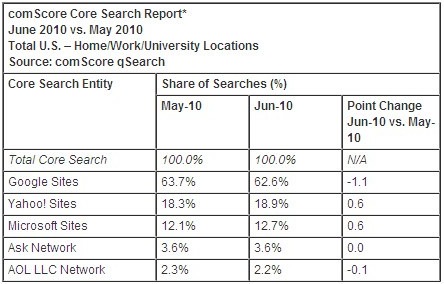


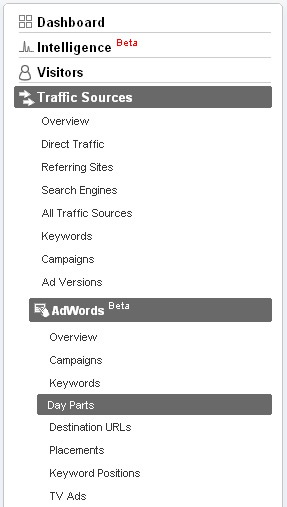
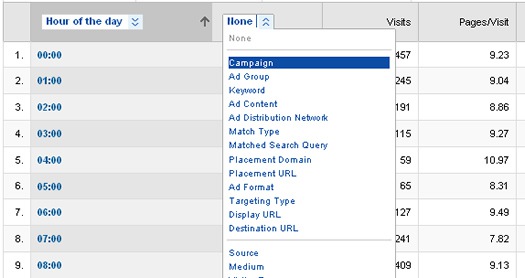


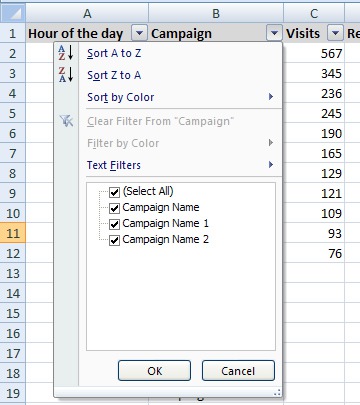
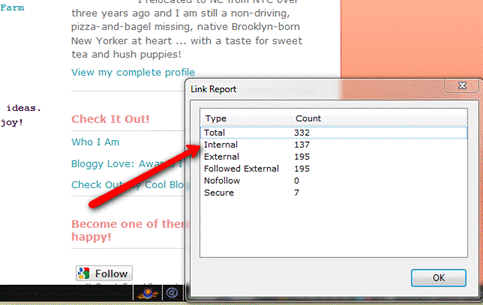
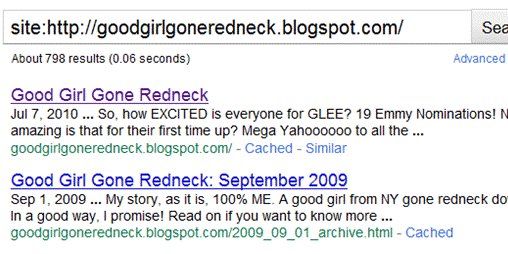





No hay comentarios:
Publicar un comentario